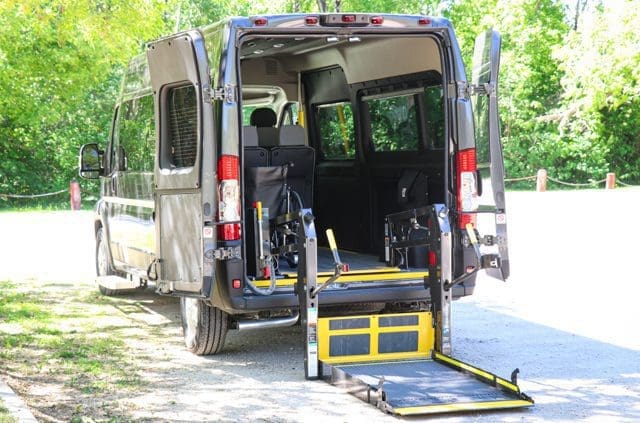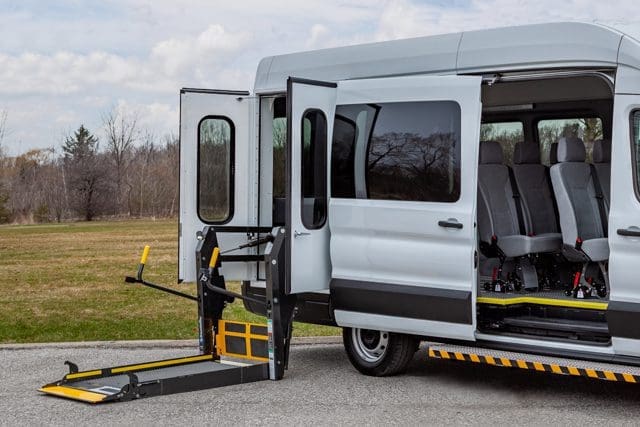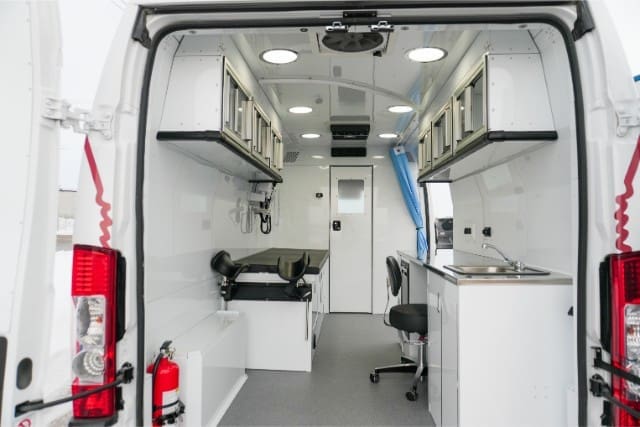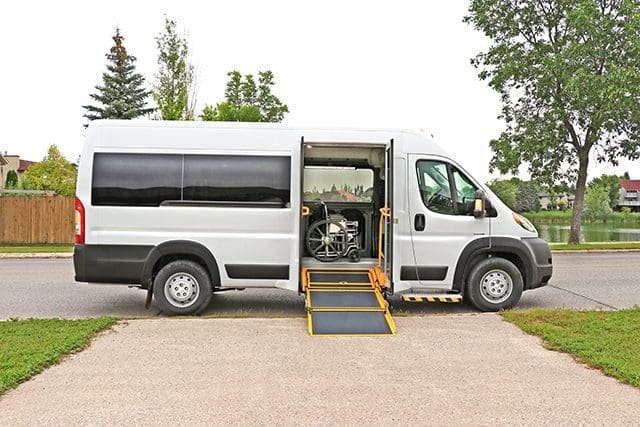When you’re responsible for a fleet of wheelchair accessible vans, each day brings new challenges. However, one issue that can cause a significant disruption is when your wheelchair lift stops working. This problem directly impacts the individuals who rely on your services for mobility and independence.
As a business owner or operator in the transportation or healthcare sector, you know how important it is to keep everything running smoothly. That’s where we come in.
At MoveMobility, we’ve dedicated over a decade to mastering the design and production of wheelchair accessible vans and mobile medical units. With more than ten years of manufacturing experience, our expertise is more than just creating vehicles. It’s also in ensuring they continuously meet the needs of the communities they’re serving.
In this article, you’re going to learn about one of the common reasons why your wheelchair lift isn’t moving, along with the solution to go with it.
What problems can a stuck wheelchair lift cause?

Imagine this: your clients are all set for a big day; maybe they have an important doctor’s visit or a special family gathering, and suddenly, your organization’s wheelchair lift just won’t move.
Panic sets in. Frustration takes over. Why isn’t the wheelchair lift moving?
This is a big deal that can really mess up the day and even be dangerous for your clients.
If the lift stops halfway, it might cause an accident or leave someone stuck and unable to get out. Every organization needs its wheelchair van lift to work safely because it’s not just about getting your clients from one place to another; it’s about prioritizing safety while you do it.
3 consequences of a stuck wheelchair van lift
A stuck wheelchair lift has a few consequences that affect your organization and its clients.
1. Messed-up plans
For businesses like hospitals or transit companies, a broken lift means a lot more than just a minor delay. It throws off the whole day’s schedule. When a lift doesn’t work, it can make everything run late, hold up appointments, and mean a lot of running around to fix the problem. Time is precious, especially when you’ve got a lot to do, and no one wants their plans ruined by a lift that won’t work.
2. Poor service delivery
Businesses that help people get around, like wheelchair transportation services or care homes, need to keep their promises about providing good service. If a wheelchair lift breaks, the service can be slower and less reliable, which is bad for business.
Think about someone who needs to get to an important appointment but can’t because the lift is stuck. It’s frustrating for everyone and can make customers think twice about using the service again.
3. Increased frustration
When your organization’s wheelchair lift isn’t working, it can also make people feel upset or helpless. For someone who uses the lift, it reminds them of the challenges they face every day. Everyone needs to have tools that work well so they can feel confident and independent.
It’s really important to take good care of wheelchair lifts. Regular check-ups can help avoid problems before they start. Knowing a team ready to fix it quickly can make a big difference if something does go wrong. Staying ahead of issues and making sure lifts work right all the time helps everyone feel better and safer.
When you understand how tough it is when a wheelchair lift stops working, it’s easier to see why taking good care of these lifts matters so much. Keep reading to learn about one of the most common reasons why a wheelchair lift stops moving.
Why is my wheelchair lift not moving?
Have you ever been in an elevator when, suddenly, it jerks to a stop? Your heart skips a beat, a brief moment of panic sets in, and you’re left wondering, “Now what?” That sudden halt is not much different from what happens when a wheelchair lift stops moving while it’s being raised or lowered.
Let’s dive into a common culprit behind this issue.
The pressure on the inboard or outboard barriers
These barriers are critical for safety, acting like the careful eyes of a crossing guard, ensuring that nothing is too close to the edge of the lift. If anything—a suitcase, a part of the wheelchair, or even a stray backpack—presses against these barriers, the lift perceives a risk of something falling off or getting caught.
So, it stops right then and there, much like how a cautious driver might slam on their brakes if a ball rolls into the street.
Why does this happen? Imagine you’re lowering the lift, and a wheelchair or other object inadvertently leans against the side. The lift senses the pressure and thinks, “Wait a minute, this isn’t safe,” and it stops to prevent any potential mishap. This safety feature is there to protect the user, but when it’s triggered by something harmless, it can be frustrating.
Here’s what can be done about this: First, take a quick look around. Make sure that no objects or parts of the wheelchair are inadvertently leaning on the barriers. It could be as simple as moving a bag a few inches away or adjusting the position of the wheelchair. Yes, sometimes the solution is that simple, yet it makes all the difference.
Try to educate everyone, from drivers to passengers, about how to position themselves and their belongings on the lift so that you can decrease the likelihood of unintended stops.
Remember, each time the lift operates without a hitch, it’s a small victory and a sign that your organization is on top of its game, ensuring safety and reliability in every journey. That’s what makes the difference in the services you provide and underscores your clients’ trust in you.
Final thoughts
We know how important a working wheelchair lift is for your business and the people you help. Every time the lift breaks down, it’s a hassle that shakes your clients’ trust in your services. It’s really frustrating when, no matter how many quick fixes you try, the problems keep coming back.
When these issues happen a lot, it might be time to think about how much time and effort you’re putting into short-term fixes. If you’re always fixing the lift, maybe it’s time to look at a better, long-lasting solution. At MoveMobility, we make top-notch wheelchair-accessible vans that use the latest wheelchair lift technology and are built to be reliable and safe.
Choosing to get a new van is a big decision, but it’s also a way to make sure your service stays strong and dependable. Think of it as a way to keep things smooth and worry-free for both you and your clients with reliable equipment that’s ready for anything.
Your next steps with MoveMobility

You likely landed on this article because your organization’s wheelchair van lift has been causing you some trouble. We hope this information has given you some insight into one of the reasons why this happens.
Our team at MoveMobility tries hard to make sure our customers have as much information as possible before making a decision, whether that be for maintenance or purchasing something new. If you have any questions about our wheelchair accessible vans or lifts, don’t hesitate to click the button after this article to talk to a mobility expert.
If, at this point, you’re looking for information on how our wheelchair van service works, check out our article on that to learn more. Or, if you’re growing tired of wheelchair van or lift issues and juggling around the idea of purchasing a new one, read our article on how much a wheelchair van costs, along with how much it costs for one year.








